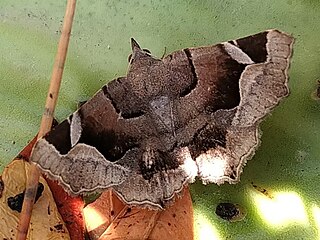
Pierre Chammassian (born in Bourj Hammoud on 9 March 1949, Beirut, Lebanon) is a Lebanese-Armenian comedian, actor and stand-up comic, popular in Lebanon with Arabs and Armenians, as well as in the Armenian Diaspora.[ citation needed ]

Pierre Chammassian (born in Bourj Hammoud on 9 March 1949, Beirut, Lebanon) is a Lebanese-Armenian comedian, actor and stand-up comic, popular in Lebanon with Arabs and Armenians, as well as in the Armenian Diaspora.[ citation needed ]

This is a demography of the population of Lebanon including population density, education level, health of the populace, economic status, religious affiliations and other aspects of the population.

The Armenian Revolutionary Federation, also known as Dashnaktsutyun, is an Armenian nationalist and socialist political party founded in 1890 in Tiflis, Russian Empire by Christapor Mikaelian, Stepan Zorian, and Simon Zavarian. As of 2023, the party operates in Armenia, Lebanon, Iran and in countries where the Armenian diaspora is present. The party was also active in Artsakh until the Azerbaijani offensive in September 2023. Although it has long been the most influential political party in the Armenian diaspora, it has a comparatively smaller proportional presence in modern-day Armenia. As of October 2023, the party was represented in two national parliaments, with ten seats in the National Assembly of Armenia and three seats in the Parliament of Lebanon as part of the March 8 Alliance.

The Armenian Catholic Church is an Eastern Catholic particular churches sui iuris of the Catholic Church. It accepts the leadership of the bishop of Rome, and is therefore in full communion with the universal Catholic Church, including the Latin Church and the 22 other Eastern Catholic Churches. The Armenian Catholic Church is regulated by Eastern canon law, summed up in the Code of Canons of the Eastern Churches.
Aztag is a daily newspaper and the official newspaper of the Armenian Revolutionary Federation (Dashnaktsutiun) in Lebanon. The editor in chief is Shahan Kandaharian.
The Armenian Evangelical Peter and Elizabeth Torosian School is a school in Bourj Hammoud, Lebanon. The school was established as a kindergarten in 1951, by Rev Hadidian, and began with 20 children in a 2-roomed flat. By the next year, the number of students had almost doubled, and an elementary section was added. In 1966, the school moved to a new building in Amanos-Dora, which had been provided by Mr and Mrs Torossian – hence the school's name.

The National Order of the Cedar is the highest state order of Lebanon, established on 31 December 1936. It is offered in five grades.

The Patriarchal Congregation of Bzommar is an Armenian Catholic religious congregation of priests which was founded in 1750. They use the initials I.C.P.B. after their names.
Ethnic Armenians in Qatar number between 800 and 1,500 and live mainly in the capital Doha. Unofficial sources place them at around 5,500.

Zethes insularis is a species of moth in the family Erebidae first described by Jules Pierre Rambur in 1833. The species is found in the warmer parts of the Mediterranean area: Armenia and the Caucasus, Iraq, south-western Iran, Lebanon, Israel, Syria and Jordan.

The Armenian Revolutionary Federation, also known simply as Tashnag, is an Armenian political party active in Lebanon since the 1920s as an official political party in the country after having started with small student cells in the late 1890s and early 20th century.

Maronite Cypriots are an ethnoreligious group and/or members of the Maronite Catholic Archeparchy of Cyprus whose ancestors migrated from the Levant during the Middle Ages. A percentage of them traditionally speak a variety of Arabic known as Cypriot Arabic, in addition to Greek. People speaking this Arabic dialect originate from one village, specifically Kormakitis. As Eastern Catholics of the West Syriac Rite, they are in full communion with the Catholic Church of Rome.

The Cathedral of Saint Elias and Saint Gregory the Illuminator is a cathedral of the Armenian Catholic Church in Debbas Square in downtown Beirut, Lebanon. Construction was funded in 1928 by Pope Pius XI. It is the cathedra of the Armenian Catholic Patriarchate of Cilicia. The order in which the two eponymous saints are presented in the cathedral's name, Saint Elias and Saint Gregory the Illuminator, is not fixed.
General elections were held in Lebanon between 12 July and 9 August 1953, the first under the new electoral system which allowed candidates to win with a plurality of votes, rather than requiring a second round. Independent candidates won the majority of seats. Voter turnout was 50.0%.

Raymond Haroutioun Kévorkian is a French Armenian historian. He is a Foreign Member of Armenian National Academy of Sciences. Kevorkian has a PhD in history (1980), and is a professor.
Gurgen Vazgen Engibaryan is a former footballer who played as a midfielder.

Voting to elect eight members of the Lebanese parliament took place in the Beirut I district on March 24, 1968, part of the national general election of that year. The constituency had 98,439 eligible voters, out of whom 28,631 voted. The elections in Beirut I passed smoothly without violent incidents.
Joseph Chader was a Lebanese Armenian Catholic politician. He was a Member of Parliament between 1951 and 1977, and served as deputy speaker at times. In 1958 he became the first Armenian government minister in Lebanon. He served as vice chairman of the Kataeb Party.
Colonia or Koloneia, also called Colonia in Armenia to distinguish it from other towns of the same name, was a town of ancient Lesser Armenia, inhabited during Hellenistic, Roman, and Byzantine times. It became important enough to be the seat of a bishop, a suffragan in the Late Roman Province of Armenia Prima, but faded like most in Asia Minor. No longer a residential bishopric, it remains, under the name Colonia in Armenia, a titular see of the Roman Catholic Church.

Beirut I is an electoral district in Lebanon. The district elects eight members of the Lebanese National Assembly – three Armenian Orthodox, one Armenian Catholic, one Greek Catholic, one Greek Orthodox, one Maronite and one Minorities.